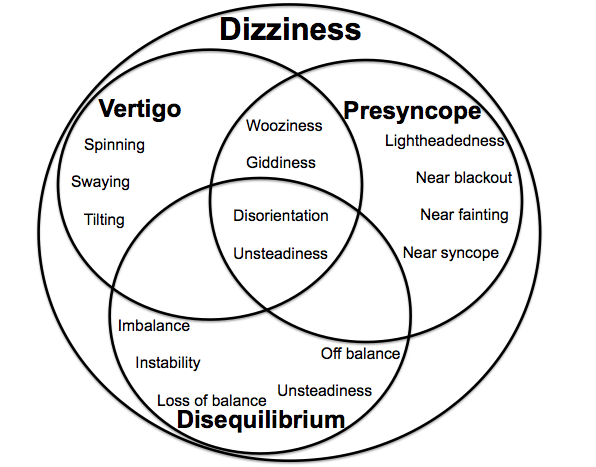Benign paroxysmal positional vertigo diagnostic study of choice
|
Benign paroxysmal positional vertigo Microchapters |
|
Differentiating Benign Paroxysmal Positional Vertigo from other Diseases |
|---|
|
Diagnosis |
|
Treatment |
|
Case Studies |
|
Benign paroxysmal positional vertigo diagnostic study of choice On the Web |
|
American Roentgen Ray Society Images of Benign paroxysmal positional vertigo diagnostic study of choice |
|
FDA on Benign paroxysmal positional vertigo diagnostic study of choice |
|
CDC on Benign paroxysmal positional vertigo diagnostic study of choice |
|
Benign paroxysmal positional vertigo diagnostic study of choice in the news |
|
Blogs on Benign paroxysmal positional vertigo diagnostic study of choice |
Editor-In-Chief: C. Michael Gibson, M.S., M.D. [1]; Associate Editor(s)-in-Chief: Fahimeh Shojaei, M.D.
Overview
The diagnostic study of choice for BPPV is patient history and observing nystagmus on Dix-Hall pike maneuver.
Diagnostic Study of Choice
|
{{#ev:youtube|https://www.youtube.com/watch?v=RNBJLed_Slc&t=4s%7C500}} |
Study of choice
The diagnostic study of choice for BPPV is patient history and observing nystagmus on Dix-Hall pike maneuver.[1][2][3]
Investigations:
- Among the patients who present with clinical signs of BPPV, the Dix-Hallpike maneuver is the most specific test for the diagnosis.
Diagnostic results
The following findings are confirmatory for BPPV:
- Recurrent brief vertigo attack which starts with certain head movements.
- Nystagmus on Dix-Hallpike maneuver.
Sequence of Diagnostic Studies
The various investigations must be performed in the following order:
If patients doesn't respond to treatment or doesn't show the typical nystagmus on Dix-Hall pike maneuver, in order to rule out other abnormalities we may perform some additional test such as:
- Electronystagmography (ENG) or video nystagmography (VNG)
- Audiometry
- Neuroimaging
For more information about these tests, click here.
Diagnostic criteria for posterial canal BPPV
| Subtypes | Explanation |
|---|---|
| History |
|
| Physical exam |
|
Diagnostic approach
Diagnostic approach to a patient with dizziness:
| Patient present with dizziness[4][5][6][7] | |||||||||||||||||||||||||||||||||||||||||||||||||||||||||||
| Loss of consciousness? | |||||||||||||||||||||||||||||||||||||||||||||||||||||||||||
| Yes | No | ||||||||||||||||||||||||||||||||||||||||||||||||||||||||||
| Sense of motion/ spinning? | |||||||||||||||||||||||||||||||||||||||||||||||||||||||||||
| Other | Sweating Heaviness sensation in the legs "Tunnel" vision Feeling warm or hot Nausea Vomiting | History of seizure Aura Post-ictal phase Uncontrollable muscle spasms Drooling or frothing at the mouth Teeth clenching Tongue biting Sudden, rapid eye movements | Yes | No | |||||||||||||||||||||||||||||||||||||||||||||||||||||||
| Electrolyte imbalance/ Intracranial process | Syncope | Seizure | Vertigo | ||||||||||||||||||||||||||||||||||||||||||||||||||||||||
| Sudden, and generally momentary, loss of consciousness, or blacking out caused by the Central Ischaemic Response | Temporary abnormal electro-physiologic phenomenon of the brain, resulting in abnormal synchronization of electrical neuronal activity | Sudden onset? Horizental nystagmus? Auditory symptoms? No neurological problem? | |||||||||||||||||||||||||||||||||||||||||||||||||||||||||
| Causes: •Hemorrhage •Hypotension •Hypoxia •Pulmonary embolism •Ruptured abdominal aortic aneurysm •Ventricular arrhythmia •Arrhythmia •Medication •Orthostatic hypotension •Vagal stimulation •Vertebrobasilar insufficiency | Causes: •Brain damage •Congenital abnormalities •Stroke •Infection •Genetic syndromes •Brain tumor •Epilepsy | ||||||||||||||||||||||||||||||||||||||||||||||||||||||||||
| Yes | No | ||||||||||||||||||||||||||||||||||||||||||||||||||||||||||
| Peripheral | Central | ||||||||||||||||||||||||||||||||||||||||||||||||||||||||||
| BPPV Vestibular neuritis HSV oticus Meniere disease Labyrinthine concussion Perilymphatic fistula Semicircular canal dehiscence syndrome Vestibular paroxysma Cogan syndrome Vestibular schwannoma Otitis media Aminoglycoside toxicity Recurrent vestibulopathy | Vestibular migraine Epileptic vertigo Multiple sclerosis Brain tumors Crebellar infarction/hemorrhage Brain stem ischemia Chiari malformation Parkinson | ||||||||||||||||||||||||||||||||||||||||||||||||||||||||||
| Hyperventilation Psychiatric symptoms | Balance problem | Sweating Tunnel Vision Nausea Heart palpitations Abdominal discomfort Slurred speech | |||||||||||||||||||||||||||||||||||||||||||||||||||||||||
| Psychogenic dizziness | Dysequilibrium | Presyncope | |||||||||||||||||||||||||||||||||||||||||||||||||||||||||
| Dizziness which is not characterized by true vertigo and it can be replicated by hyperventilation and psychiatric symptoms that usually precede its onset. | Impaired sense or absence of balance or equilibrioception that primarily occurs during standing or walking | Feeling of lightheadedness that can lead to syncope | |||||||||||||||||||||||||||||||||||||||||||||||||||||||||
| Causes: •Alcohol dependence •Conversion disorder •Fibromyalgia •Generalized anxiety •Hyperventilation •Major depression •Panic disorder | Causes: •Arrhythmia •Asthma exacerbation •Cerebellar hemorrhage •Compartment syndrome •Endophthalmitis •Epilepsy •Hypoglycemia •Organophosphates •Cerebellar disorders •Gait abnormality •Hypoglycemia •Paralysis •Peripheral neuropathy •Vestibular disorders •Visual impairment | Causes: •Hemorrhage •Hypotension •Hypoxia •Pulmonary embolism •Ruptured abdominal aortic aneurysm •Ventricular arrhythmia •Arrhythmia •Medication •Orthostatic hypotension •Vagal stimulation •Vertebrobasilar insufficiency | |||||||||||||||||||||||||||||||||||||||||||||||||||||||||
References
- ↑ Lee SH, Kim JS (June 2010). "Benign paroxysmal positional vertigo". J Clin Neurol. 6 (2): 51–63. doi:10.3988/jcn.2010.6.2.51. PMC 2895225. PMID 20607044.
- ↑ Chang MB, Bath AP, Rutka JA (October 2001). "Are all atypical positional nystagmus patterns reflective of central pathology?". J Otolaryngol. 30 (5): 280–2. PMID 11771020.
- ↑ Dorresteijn PM, Ipenburg NA, Murphy KJ, Smit M, van Vulpen JK, Wegner I, Stegeman I, Grolman W (June 2014). "Rapid Systematic Review of Normal Audiometry Results as a Predictor for Benign Paroxysmal Positional Vertigo". Otolaryngol Head Neck Surg. 150 (6): 919–24. doi:10.1177/0194599814527233. PMID 24642523.
- ↑ Dieterich M, Staab JP, Brandt T (2016). "Functional (psychogenic) dizziness". Handb Clin Neurol. 139: 447–468. doi:10.1016/B978-0-12-801772-2.00037-0. PMID 27719862.
- ↑ Cheshire WP (April 2017). "Syncope". Continuum (Minneap Minn). 23 (2, Selected Topics in Outpatient Neurology): 335–358. doi:10.1212/CON.0000000000000444. PMID 28375909.
- ↑ Chan, Yvonne (2009). "Differential diagnosis of dizziness". Current Opinion in Otolaryngology & Head and Neck Surgery. 17 (3): 200–203. doi:10.1097/MOO.0b013e32832b2594. ISSN 1068-9508.
- ↑ Brandt, T (2001). "NOSOLOGICAL ENTITIES?: Cervical vertigo". Journal of Neurology, Neurosurgery & Psychiatry. 71 (1): 8–12. doi:10.1136/jnnp.71.1.8. ISSN 0022-3050.
